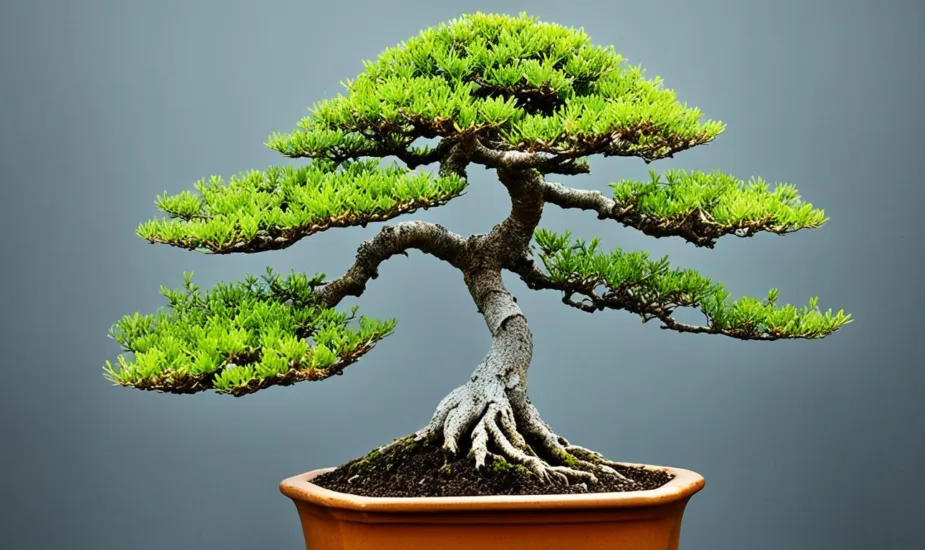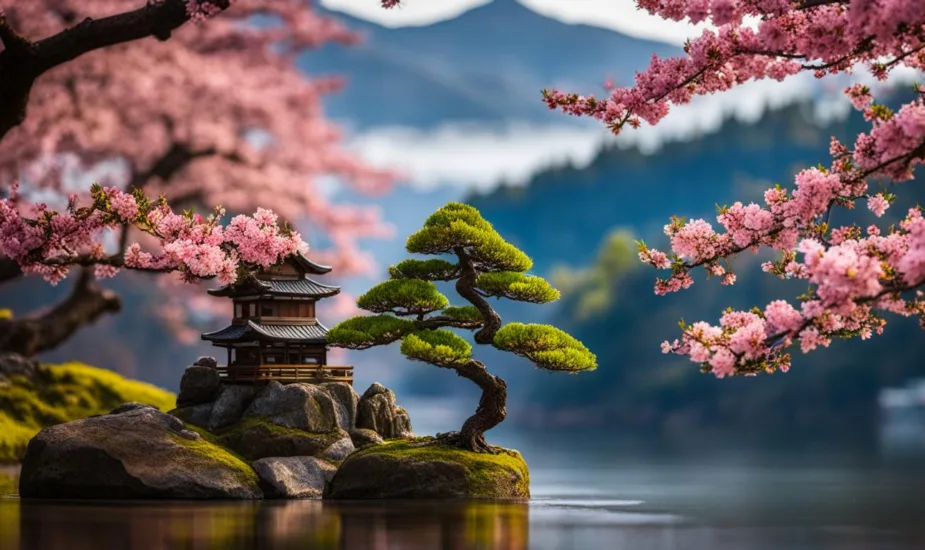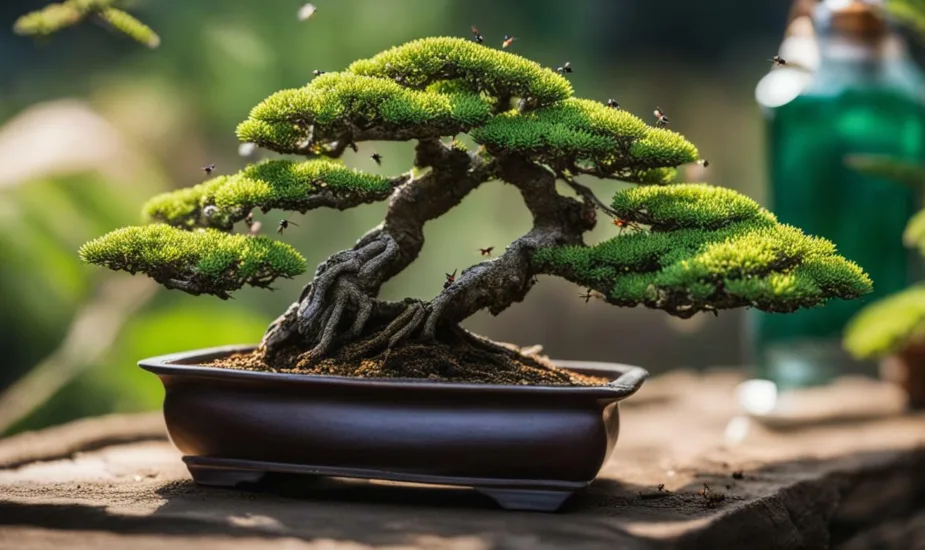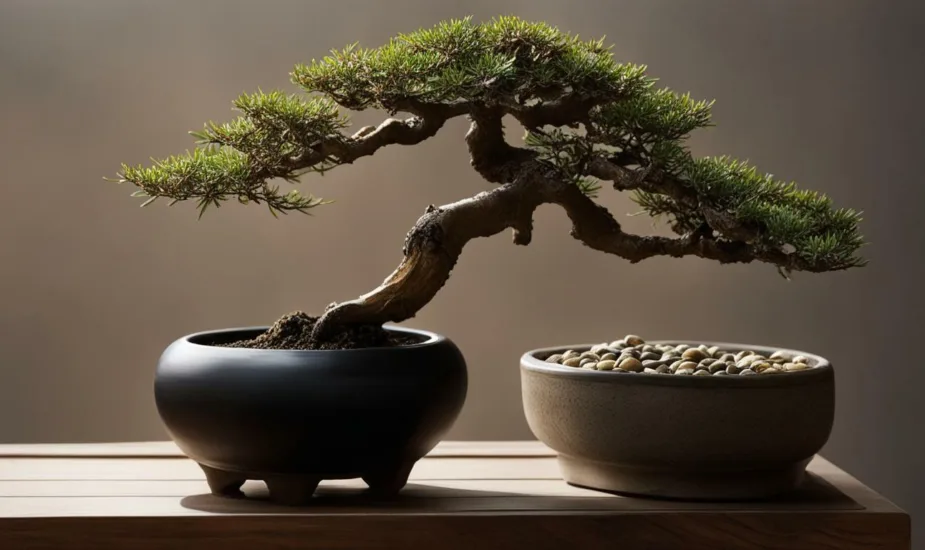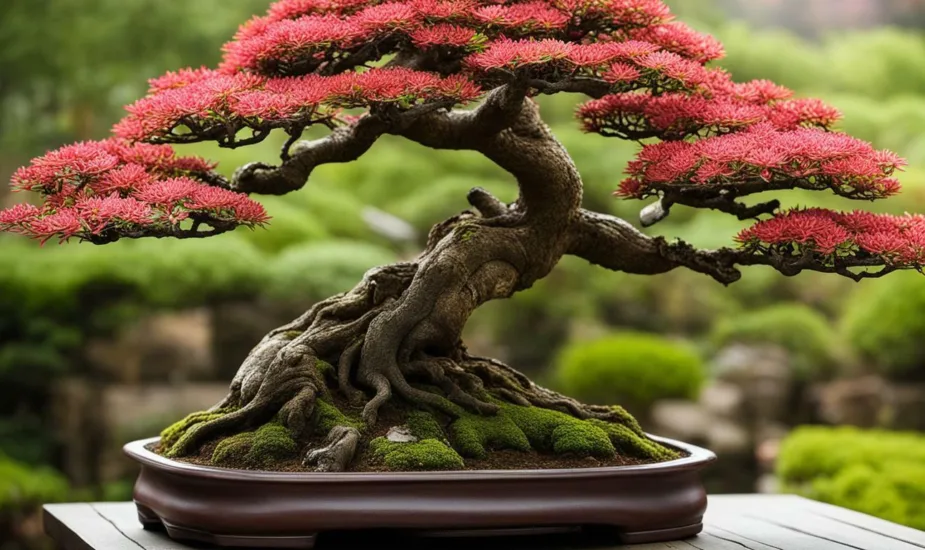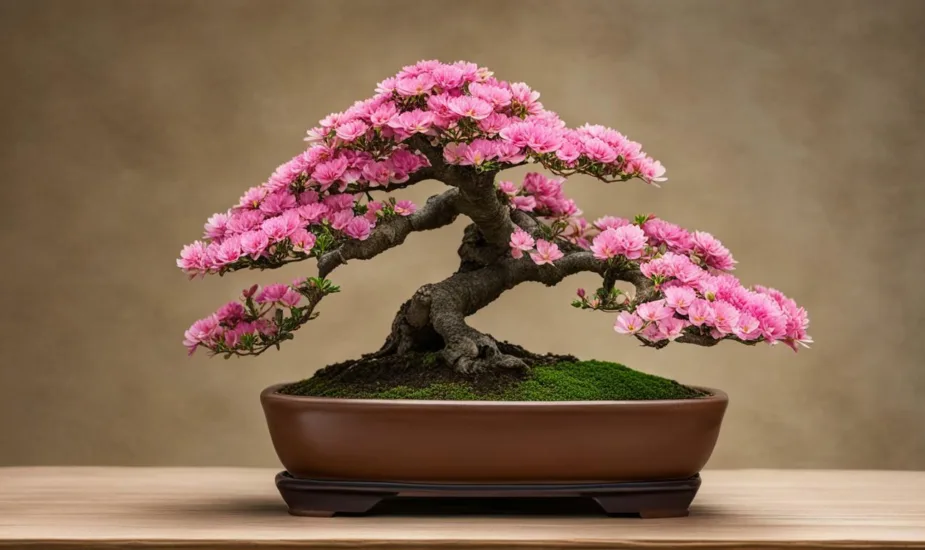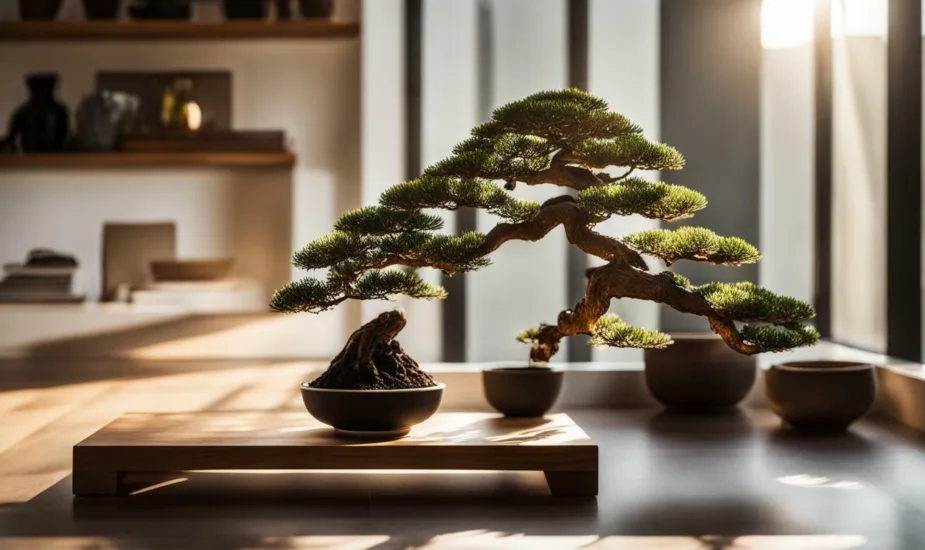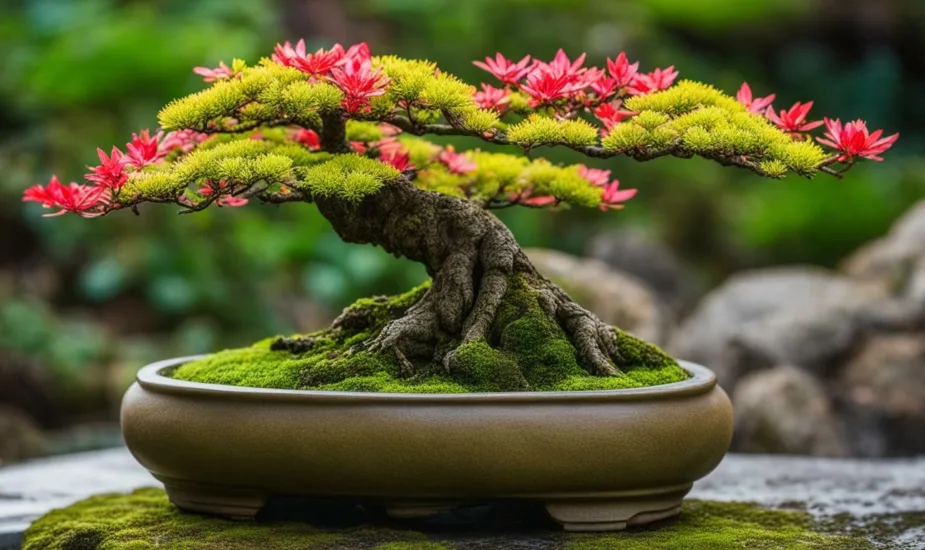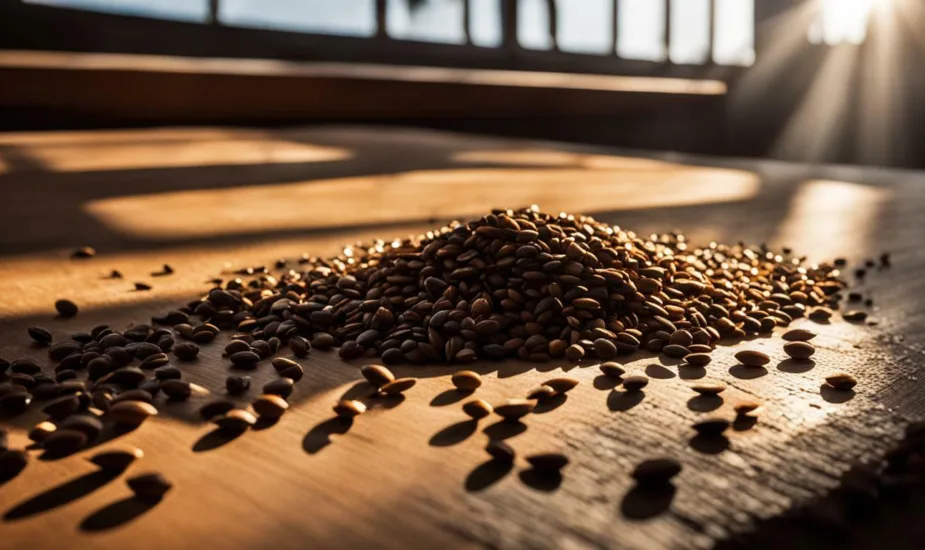Do Bonsai Trees Need Direct Sunlight? Let’s Find Out!
Bonsai trees require different amounts of sunlight depending on the species. Most popular bonsai trees benefit from full sun, but some shade-loving trees can also do well.
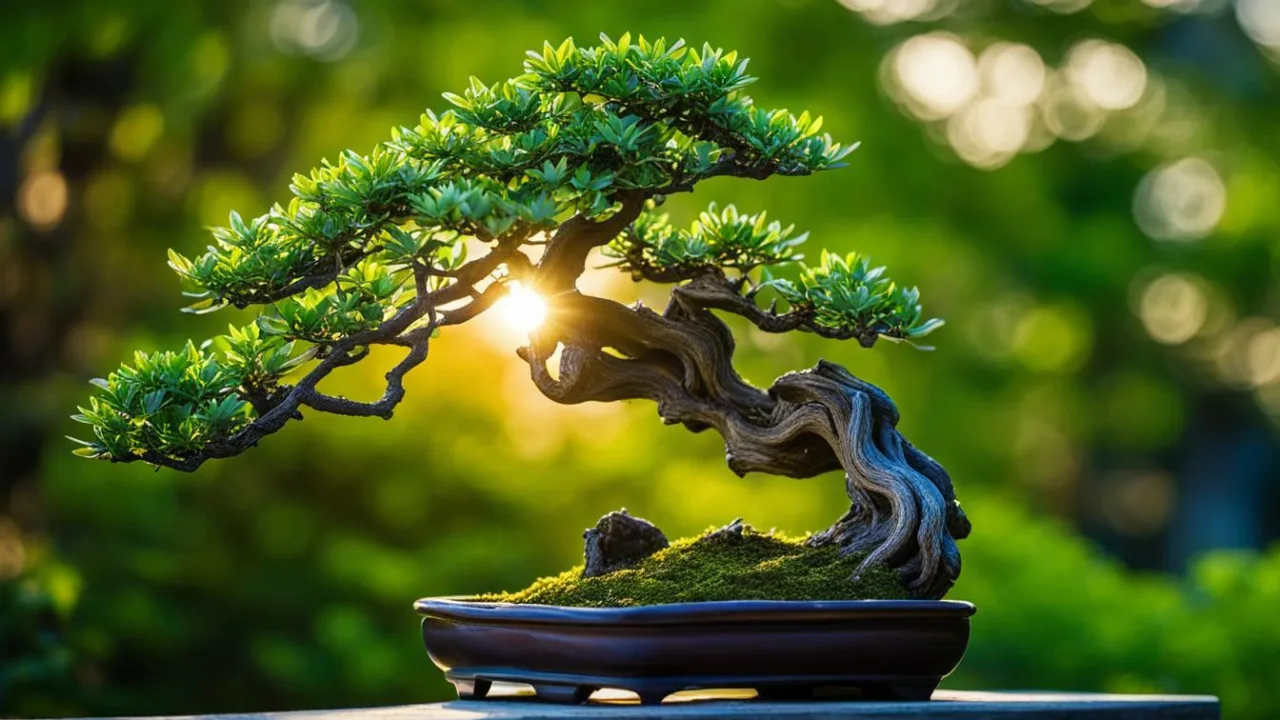
When kept indoors, bonsai trees should be placed in a sunny location. Low-light bonsai trees are limited and may require access to natural light while indoors. During the winter, bonsai trees can be positioned indoors in a sunny spot if they continue to grow, or in an unheated garage or storage area if they go dormant.
Signs of light deprivation include long, leggy growth, big leaves, moldy soil, and susceptibility to pests and disease. Outdoor bonsai trees should be positioned in areas similar to their in-ground counterparts. Bonsai trees may be winter hardy if they are native to the environment or have similar climate conditions.
General bonsai tree care includes watering, fertilizing, repotting, and pruning. Bonsai trees should be placed in an area with bright, indirect sunlight, and watered when the soil becomes dry. Fertilizer with nitrogen, phosphorus, and potassium is recommended.
Repotting is necessary every year to three years, and bonsai tools such as pruning scissors and tweezers are useful for maintenance. Seeking guidance from classes or bonsai clubs is recommended for beginners. Overall, patience is key in caring for bonsai trees, and they can bring personal rewards.
- Bonsai trees have varying sunlight requirements based on their species.
- Most bonsai trees benefit from full sun, but some can tolerate shade.
- Indoor bonsai trees should be placed in a sunny location for optimal growth.
- Low-light bonsai trees may require access to natural light while indoors.
- During winter, bonsai trees can be positioned in a sunny spot indoors or in an unheated area if they go dormant.
Best Light Conditions for Bonsai Trees
Most popular bonsai trees benefit from full sun, but some shade-loving trees can also do well. When it comes to providing the best light conditions for your bonsai tree, it is important to consider the specific needs of the species you are growing. Full sun exposure is generally recommended for bonsai trees that thrive in sunny environments, such as Junipers or Pines.
For shade-loving bonsai trees like Azaleas or Maples, it is crucial to provide them with indirect sunlight or filtered light. Placing them in a location where they receive a few hours of morning or late afternoon sun can be beneficial. Too much direct sunlight can cause leaf burn and damage to these delicate trees.
It is also important to note that when bonsai trees are kept indoors, they may require additional access to natural light. Placing them near a bright window or using artificial grow lights can help supplement their sunlight needs. Low-light bonsai trees, such as Fukien Tea or Chinese Elm, should be provided with as much light as possible, ideally at least 4-6 hours of direct or indirect sunlight per day.
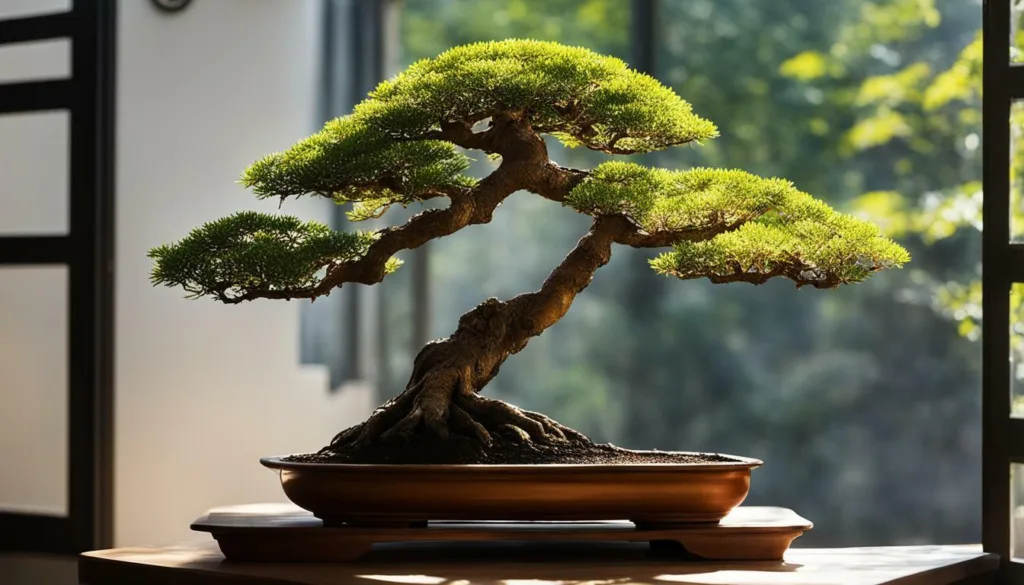
Table – Required Light Conditions for Popular Bonsai Trees
| Bonsai Tree Species | Light Requirements |
|---|---|
| Juniper | Full sun |
| Pine | Full sun |
| Azalea | Filtered light or partial shade |
| Maple | Filtered light or partial shade |
| Fukien Tea | Indirect sunlight or bright artificial light |
| Chinese Elm | Indirect sunlight or bright artificial light |
Remember to regularly monitor your bonsai tree for signs of light deprivation or excessive exposure. Adjust their lighting conditions as needed to ensure their health and well-being. Providing the right amount of light, whether it’s full sun or filtered light, is essential for the overall growth and development of your bonsai tree.
Sunlight Requirements for Bonsai Trees Care
When kept indoors, bonsai trees should be placed in a sunny location. Just like their outdoor counterparts, indoor bonsai trees thrive when they receive an adequate amount of sunlight. Placing your bonsai tree near a window that receives direct sunlight is ideal. This ensures that your tree gets the necessary light for photosynthesis, which is crucial for its growth and overall health.
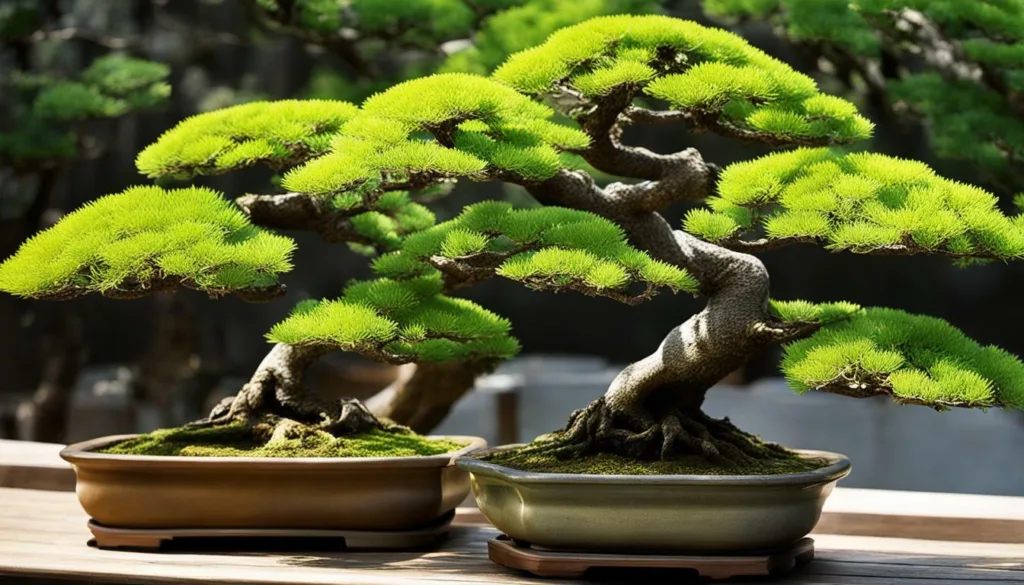
Bonsai trees that are deprived of sunlight may exhibit signs of light deprivation. These signs include long, leggy growth, larger than usual leaves, moldy soil, and increased susceptibility to pests and disease. To prevent these issues, it is essential to provide your bonsai tree with the proper amount of sunlight.
During the winter months, when natural sunlight may be limited, you can position your bonsai tree indoors in a sunny spot. If your bonsai tree goes dormant during winter, you can also place it in an unheated garage or storage area. This ensures that your bonsai tree still receives the necessary light to survive through the winter.
Overall, proper sunlight requirements are vital for maintaining the health and beauty of your bonsai tree. By providing adequate sunlight, your bonsai tree will thrive and bring you years of enjoyment. Remember to monitor your bonsai tree’s light exposure and adjust accordingly to ensure it receives the optimal amount of sunlight for healthy growth.
Winter Sunlight Considerations for Bonsai Trees
During the winter, bonsai trees can be positioned indoors in a sunny spot if they continue to grow, or in an unheated garage or storage area if they go dormant. It is important to provide the right amount of sunlight to ensure the health and vitality of your bonsai tree during the colder months.
When placing your bonsai tree indoors, choose a location that receives bright, indirect sunlight. This can be near a south-facing window or under artificial grow lights that mimic natural sunlight. It is important to avoid placing the bonsai tree directly in front of a window as the cold drafts can harm the tree.
If your bonsai tree goes dormant during winter, it can be placed in an unheated area such as a garage or storage room. However, ensure that the area still receives some sunlight during the day. You can position the tree near a window or use supplemental grow lights to provide the necessary light.
Remember that different bonsai tree species have varying sunlight requirements, so it is crucial to research the specific needs of your tree. Some trees may require more sunlight, while others may thrive in shade or partial shade conditions. Consulting a bonsai expert or joining a bonsai club can provide valuable guidance on caring for your tree during the winter months.
To summarize, during winter, bonsai trees can be positioned indoors in a sunny spot or in an unheated area with access to sunlight. Providing the right amount of light is essential for the health and growth of your bonsai tree. Research the sunlight requirements of your specific bonsai species and seek guidance from experts to ensure proper care throughout the winter season.
| Sunlight Considerations for Winter Bonsai Care |
|---|
| Place bonsai trees indoors near a sunny window or under artificial grow lights. |
| Position dormant bonsai trees in an unheated area that still receives sunlight. |
| Research the specific sunlight requirements of your bonsai tree species. |
| Consult bonsai experts or join a bonsai club for guidance on winter care. |
Remember, taking care of bonsai trees requires time and patience. By providing the right amount of sunlight during winter, you can ensure the continued health and beauty of your bonsai tree collection.
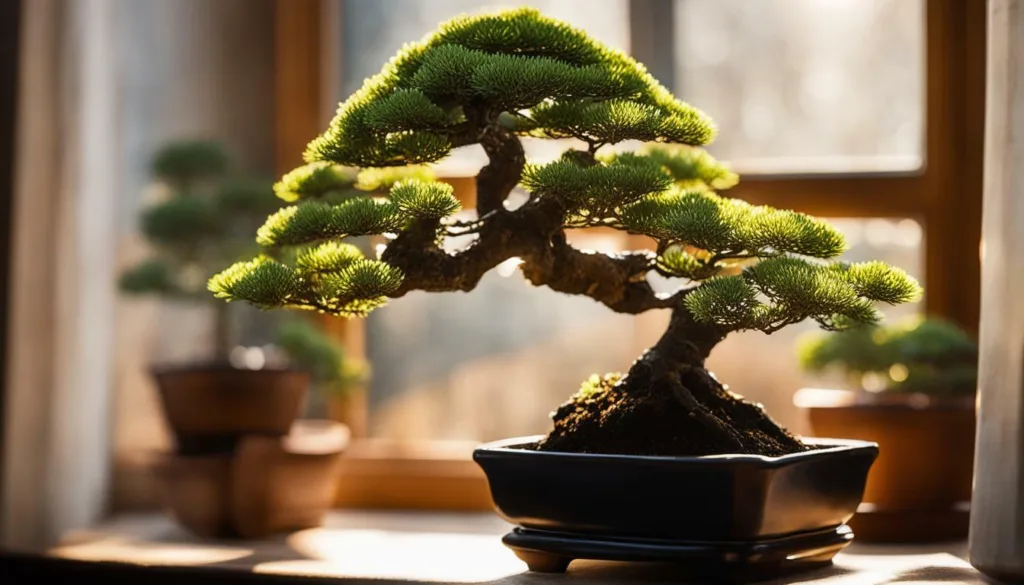
Overall, providing the right amount of sunlight is crucial for the healthy growth of bonsai trees. Different species have varying sunlight requirements, with most popular bonsai trees benefiting from full sun. However, there are also shade-loving bonsai trees that can thrive in less direct sunlight.
When kept indoors, bonsai trees should be placed in a sunny location to ensure they receive enough natural light. Low-light bonsai trees may require access to additional sunlight while indoors. During the winter months, bonsai trees can be positioned in a sunny spot indoors if they continue to grow, or in an unheated garage or storage area if they go dormant.
It is important to be aware of signs of light deprivation in bonsai trees, such as long, leggy growth, large leaves, moldy soil, and increased susceptibility to pests and disease. Outdoor bonsai trees should be positioned in areas that provide similar conditions to their in-ground counterparts.
General care for bonsai trees includes watering, fertilizing, repotting, and pruning. Bright, indirect sunlight is recommended for optimal growth, and watering should be done when the soil becomes dry. Fertilizing with nitrogen, phosphorus, and potassium is important for providing the necessary nutrients. Repotting should be done every one to three years, and the use of bonsai tools such as pruning scissors and tweezers is helpful for maintenance.
For beginners, seeking guidance from bonsai classes or clubs is highly recommended to learn proper care techniques. Patience is key when caring for bonsai trees, as they require consistent attention and can bring personal rewards.
FAQ
Do bonsai trees need direct sunlight?
Bonsai trees require different amounts of sunlight depending on the species. Most popular bonsai trees benefit from full sun, but some shade-loving trees can also do well.
Where should indoor bonsai trees be placed in terms of sunlight?
When kept indoors, bonsai trees should be placed in a sunny location. Low-light bonsai trees may require access to natural light while indoors.
What should I do with my bonsai trees during the winter?
During the winter, bonsai trees can be positioned indoors in a sunny spot if they continue to grow, or in an unheated garage or storage area if they go dormant.
What are the signs of light deprivation in bonsai trees?
Signs of light deprivation include long, leggy growth, big leaves, moldy soil, and susceptibility to pests and disease.
How should outdoor bonsai trees be positioned in terms of sunlight?
Outdoor bonsai trees should be positioned in areas similar to their in-ground counterparts. Bonsai trees may be winter hardy if they are native to the environment or have similar climate conditions.
What are some general care tips for bonsai trees?
General bonsai tree care includes watering, fertilizing, repotting, and pruning. Bonsai trees should be placed in an area with bright, indirect sunlight, and watered when the soil becomes dry. Fertilizer with nitrogen, phosphorus, and potassium is recommended. Repotting is necessary every year to three years, and bonsai tools such as pruning scissors and tweezers are useful for maintenance.
Where can beginners seek guidance for bonsai tree care?
Seeking guidance from classes or bonsai clubs is recommended for beginners.
 Little Garden Tips
Little Garden Tips




